First aid training for individuals struck by lightning strike
500,000 ₫
Note: The above price is calculated per person. Prices may vary depending on the number of participants in the course and market fluctuations. For more accurate pricing, please refer to the price list or contact our consulting staff directly.
Table of Contents
Toggle1. Identifying a Lightning Strike Victim
a. Cases of lightning strike
A lightning strike victim is an emergency case that requires immediate first aid to prevent serious complications. The following are some cases of lightning strike victims:
- Direct lightning strike: This occurs when a person is directly hit by lightning. This can happen outdoors or indoors near electrical devices.
- Indirect lightning strike: This occurs when a person is near a conductor, such as a tree, power pole, wire, or a river struck by lightning.
- Remote lightning effects: This occurs when a person is affected by lightning without direct or indirect contact. For example, nearby lightning may shake a building or cause other objects to discharge electricity, posing a risk to humans.

b. Signs someone is about to be struck by lightning
Signs that a person may be about to be struck by lightning can include:
- Burning smell in the air: Sometimes a smell similar to smoke or burnt material can be detected.
- Sudden weather changes: Lightning often occurs during severe weather, including rain, thunderstorms, strong winds, and frost. Rapid weather deterioration is a warning sign.
- Electrical sensation on the skin: Some may feel tingling or a sudden jolt across the body.
- Headache: Lightning can affect the nervous system, causing headaches and dizziness.
- Sudden rise in body temperature: Lightning can abruptly raise body temperature, causing fever and headache.
- Other symptoms: Victims may experience chest pain, difficulty breathing, headache, memory loss, or difficulty controlling movements.
If you notice any of these signs, move the victim to a safe area and provide immediate first aid. Note that these are common warning signs and may not be sufficient for diagnosing a lightning strike.
c. Assessing the condition of a lightning strike victim
When a lightning strike victim is found, check the following conditions:
- Consciousness: Check if the victim is awake. If unconscious, check breathing and pulse.
- Breathing: Check if the victim is breathing. If not, start CPR.
- Pulse: Check the victim’s heartbeat. If absent or abnormal, start CPR immediately.
- Wounds: Inspect for any burns or injuries and provide first aid if needed.
- Other signs: If the victim is conscious, check for symptoms such as headache, dizziness, difficulty breathing, chest pain, fatigue, visual disturbances, or ringing in the ears.
In severe lightning strike cases, identifying these conditions helps guide timely and effective first aid. If unsure, immediately call emergency services for guidance and safe victim care.

d. Golden time for lightning strike cases
The golden time is the critical period for rescuing a lightning strike victim. Within the first 10 minutes, victims face life-threatening dangers including respiratory failure, cardiac arrest, and severe bodily injuries. Rapid transport to a medical facility is crucial for survival.
If you find a lightning strike victim, immediately call emergency services. Meanwhile, you can take these first aid measures:
- Move the victim to a safe area away from hazards such as power lines, obstacles, hills, water, or marshes.
- Check consciousness. If unconscious, check breathing and pulse and perform CPR if needed.
- Provide first aid for injuries if present, avoiding direct contact with wet wounds.
- Keep the victim warm and prevent shock or hypothermia.
- Provide oxygen and ensure the airway remains open.
- Keep the victim calm and restrict unnecessary movement.
If unsure how to administer these measures, call emergency services immediately for precise instructions and safe victim care.
2. Overview of First Aid Training for Lightning Strike Victims
a. What is a first aid training course?
A first aid training course teaches both basic and advanced first aid skills. It includes lessons and practical exercises on handling emergencies such as cardiac arrest, respiratory failure, poisoning, injuries, and other urgent situations.
The course equips learners with skills to respond effectively to emergencies, minimize harm to themselves and others, increase survival chances, and ensure timely transfer to medical facilities.
REGISTER FOR BASIC FIRST AID TRAINING
b. Training duration
Initial first aid training:
- For employees: 4 hours.
- For first aid and emergency responders: 16 hours (2 days).
Periodic first aid training:
- For employees: 2 hours.
- For first aid and emergency responders: 8 hours (1 day).
c. Course content
- Basic principles of first aid and on-site emergency care
- Wound bandaging (principles, tools, techniques)
- Temporary bleeding control techniques (principles and methods)
- Temporary fracture stabilization techniques (principles and tools)
- Cardiopulmonary resuscitation (recognizing signs of cardiac arrest, airway clearance, breathing support, CPR guidance)
- Burn management (assessing cause and severity, on-site first aid)
- Safe victim transportation with and without stretchers for initial care
- Specific emergency care scenarios:
- Electric shock
- Drowning
- Chemical accidents
- General guidance on first aid kit use
- Practical exercises for all content areas
d. First aid training certificate
Upon completing the course, learners receive a certificate confirming completion of the first aid training program under the Group 2 training framework as specified in Appendix IV, Decree 44/2016/ND-CP. The certificate is valid for 1 year.


3. Essential Tools for a First Aid Kit in Case of Lightning Strike
Here are some essential first aid tools for cases of lightning strikes:
- Mobile phone: to call emergency services and request medical assistance.
- Isolate the victim: ensure the safety of the lightning strike victim and those around. If possible, move the victim indoors or into a car.
- If the victim is not breathing or has very weak breathing: perform cardiopulmonary resuscitation (CPR). This requires knowledge and skills in CPR.
- Bandages and wound dressing materials: to clean and dress injuries.
- Ice packs or cold packs: help reduce pain and swelling on burned areas of the skin.
- Saline solution: for rinsing eyes or giving to the lightning strike victim to restore fluids and electrolytes.
REGISTER FOR BASIC FIRST AID TRAINING
4. First Aid Procedure for Lightning Strike Victims
Basic steps for providing first aid to lightning strike victims are as follows:
- Ensure safety: First, make sure you and those around are safe. Move the victim to a safe area if outdoors, or ensure that electrical sources are turned off if indoors.
- Call emergency services: Contact the nearest emergency service for professional medical support.
- Check for electricity: If the victim was shocked due to electrical contact, ensure the electricity is turned off before approaching to avoid danger.
- Assess the victim’s condition: Check the victim’s signs to determine their condition, including breathing, heart function, and lightning strike indicators such as burns or skin damage.
- Airway first aid: If the victim is not breathing or having difficulty, provide airway support. If cardiac arrest occurs, perform CPR immediately.
- Check wounds and burns: Examine injuries and burns to assess severity. For minor injuries, apply cold packs to reduce pain and prevent infection. For burns, immerse the burn in cold water or apply a cold cloth to the affected area.
- Transport the victim to a hospital: Once initial first aid is administered, take the victim to the nearest hospital for further examination and treatment.

5. Benefits of First Aid Training
First aid training offers many important benefits for individuals and communities:
- Saving lives in dangerous situations: First aid skills enable trainees to save someone whose life is at risk, such as cardiac arrest, respiratory arrest, poisoning, injuries, and other emergencies.
- Helping others learn first aid: Trained individuals can share knowledge and experience, allowing the community to protect itself and reduce fatalities in emergency situations.
- Reducing waiting time for rescue: Trained first aiders can handle emergencies on-site, minimizing waiting time for rescue teams.
- Enhancing response and reducing stress in emergencies: First aid training helps learners respond accurately and quickly, reducing stress and anxiety while waiting for rescue.
- Increasing survival rates and reducing fatalities: Timely and proper first aid improves survival chances and reduces complications or deaths in emergencies.
6. First Aid Training Capacity of An Toan Nam Viet
An Toan Nam Viet is a reputable and high-quality first aid training center in Vietnam. Training sessions are conducted continuously at workshops, factories, and construction sites nationwide (all 63 provinces of Vietnam).
REGISTER FOR BASIC FIRST AID TRAINING
Training Certification
- An Toan Nam Viet has been inspected and certified by the Department of Safety under the Ministry of Labor – Invalids and Social Affairs, granting certification for occupational safety and hygiene training. Within the Group 2 training program, the first aid skills module is included, further reinforcing our capacity in first aid training.

Training Materials and Lectures
- Before being used in first aid courses, training materials are reviewed to ensure accuracy and practical effectiveness.
- Instructor methods are standardized according to An Toan Nam Viet standards, developed by experts in first aid training to maximize knowledge retention for learners.
Facilities
- Controlling factors in the training room enhances teaching efficiency and knowledge absorption.
- Our training facilities provide spacious classrooms meeting standards for space, lighting, and training equipment.
7. Nationwide First Aid Training Centers
An Toan Nam Viet is one of the most reputable and professional organizations for first aid training in Vietnam. With experienced instructors, modern equipment, and high-quality programs, the center has become an ideal destination for those interested in protecting lives and health.
By attending courses at An Toan Nam Viet, you will learn basic and advanced first aid skills, including CPR for cardiac arrest, respiratory arrest, poisoning, injuries, and other emergency situations. The program is flexible and suitable for all learners, from adults to children, medical staff, rescue personnel, and the general public.
An Toan Nam Viet’s first aid training not only teaches essential life-saving skills but also fosters awareness to protect your own life and health as well as those around you. Training by experienced and highly qualified instructors ensures confidence and readiness for any emergency situation.
Register for first aid courses at An Toan Nam Viet to protect your life, health, and the community.
1 review for First aid training for individuals struck by lightning strike
No comments yet

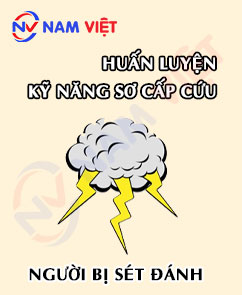
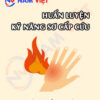

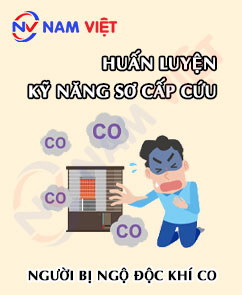


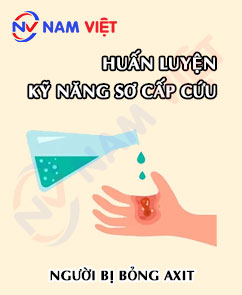
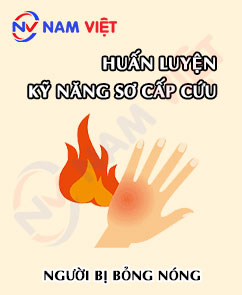


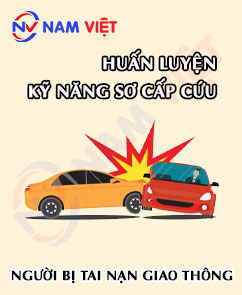
maituyet.cuong12
Good first aid training center! Satisfied